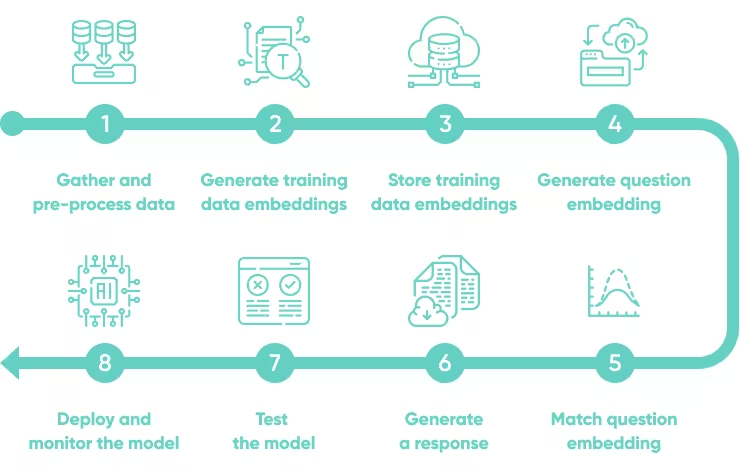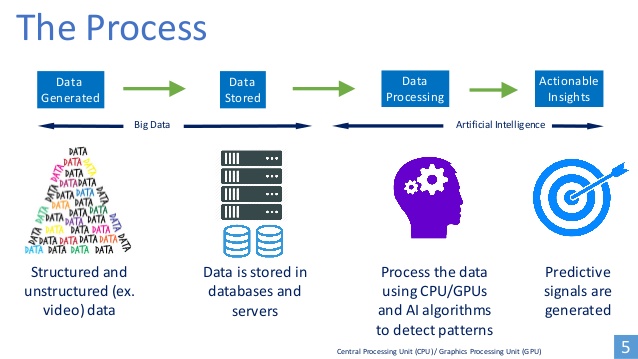How AI answers questions and interprets information ?

Artificial Intelligence (AI) has transformed the way we search for and receive information. This article explores how AI-powered question-answering (QA) systems process queries, retrieve data, and generate accurate responses using machine learning and natural language processing (NLP). We examine why AI is used for answering questions, how it processes and interprets information, and the challenges it faces, such as misinterpretation and data bias. Additionally, we discuss the adaptability of artificial intelligence to language evolution and user intent, and its practical applications in search engines, virtual assistants, and decision-making tools. Finally, we highlight the future of artificial intelligence in information retrieval and knowledge-based systems.
With advances in AI-driven information retrieval, platforms like Ask AI Anything enable users to obtain precise answers instantly, leveraging natural language understanding and contextual reasoning.
Why use AI for answering questions ?
Artificial intelligence has revolutionized information retrieval, offering unprecedented capabilities in document analysis, sentiment analysis, and providing precise answers to complex queries across various domains. AI-powered tools like title generators and speech recognition enhance productivity and streamline the user experience.
1. Speed and efficiency
AI can process vast amounts of data in a fraction of a second, far surpassing traditional data management systems. Unlike humans, AI doesn’t suffer from fatigue, offering 24/7 service with data privacy protocols to ensure user security.
2. Accuracy and context awareness
AI uses semantic analysis and advanced algorithms to refine its answers based on context. Instead of merely retrieving information, AI directly provides precise, actionable responses. Frequently asked questions (FAQs) are resolved quickly with AI technology, reducing response times and improving accuracy.
3. Scalability and automation
AI can handle millions of queries simultaneously, making it a powerful tool for managing large-scale data environments. Research papers and customer support tasks benefit significantly from automation, freeing human agents to focus on complex issues.
4. Learning and adaptability
AI constantly improves through reinforcement learning. Advanced models like Google’s BERT and GPT refine their understanding by analyzing vast user data and interactions. This adaptability makes AI indispensable in sectors like business data analytics, healthcare, education, and webpage management.
Try Wiseone for free with a 7-day pro trial
no credit card required
How does AI process information ?
AI’s contextual analysis strategies enable it to convert isolated interactions into coherent dialogues. This capability is vital for tools designed for natural language processing and improving document analysis results.
Key contextual analysis strategies
Coreference resolution
AI intelligently links pronouns and references to previous subjects. For instance, in the query sequence “What is the Eiffel Tower? How tall is it?”, AI recognizes that “it” refers to the Eiffel Tower, maintaining conversational continuity.
Intent recognition
Sophisticated AI tools distinguish between different query types, adapting responses to match the user’s search for information:
- Factual queries demand precise, data-driven answers.
- Opinion-based queries require sentiment analysis for nuanced understanding.
- Transactional queries necessitate real-time, actionable responses.
Multi-turn conversation tracking
Advanced systems like virtual assistants (e.g., Alexa and Google Assistant) maintain comprehensive interaction memory, offering more contextually relevant responses and improving the overall user experience.
Practical applications
This contextual understanding elevates AI from a basic information retrieval tool to an intelligent conversational partner. It can streamline processes in:
- Recommendation systems
- Title generation for content creation
- Business analytics
- Autonomous vehicles
By comprehending subtle linguistic nuances, AI improves decision-making tools and delivers powerful data analysis capabilities.

Why do AI assistants use repetitive disclaimer phrases ?
The prevalence of standardized AI responses stems from design principles and communication strategies aimed at providing clarity and maintaining ethical standards. Learn more about why AI can misinterpret queries and how these principles shape its interactions.
1. Transparency and limitation acknowledgment
Developers program AI to emphasize its computational nature to avoid confusion. Standard phrases like “As an AI language model” act as clear indicators of the system’s non-authoritative status.
2. Ethical boundary setting
Standard disclaimers clarify the AI’s role as an informational tool, ensuring user data protection and mitigating potential misunderstandings.
3. Algorithmic communication protocol
Formulaic introductions and conclusions maintain consistent interaction patterns while enhancing the user experience.
4. Legal and operational safeguards
Repetitive disclaimers help manage expectations and serve as protective mechanisms for developers, ensuring compliance with data privacy and operational standards.
How does contextual analysis improve AI accuracy?
Contextual analysis is vital for enhancing the precision of natural language understanding (NLU) in artificial intelligence systems. By applying advanced contextual analysis techniques, AI improves its ability to interpret user intent, disambiguate meanings, and sustain coherent interactions, bridging the gap between human and machine communication. AI employs several sophisticated strategies to achieve this:
1. Coreference resolution
Coreference resolution allows AI to identify and link pronouns or ambiguous references to the correct entities. For example, in the sentence, “He won the Nobel Prize,” the system uses semantic parsing and syntactic analysis to determine who “he” refers to by analyzing discourse-level context and external knowledge sources.
2. Discourse continuity tracking
Rather than treating interactions as isolated, AI leverages dialogue state management and multi-turn context tracking to maintain conversational flow. This approach enables virtual assistants and chatbots to deliver coherent, contextually aware responses across multiple user queries.
3. Intent disambiguation
Through intent classification and semantic disambiguation, AI differentiates between multiple meanings based on contextual cues. For instance, “What is Apple?” can refer to the tech company or the fruit. Advanced models such as transformer-based architectures (e.g., BERT, GPT) analyze query intent by considering surrounding context and user behavior patterns to deliver the correct interpretation.
By refining these techniques, AI systems transition from basic keyword matching to contextually rich, human-like comprehension, significantly improving performance in machine translation, voice recognition, and intelligent search engines.
Key Benefits:
- Enhanced interpretative accuracy
- More natural conversation flow
- Reduced misunderstandings
- Improved response relevance
Join the Wiseone community
They’re talking about us on social media.
How does AI adapt to language changes and user intent?
Language constantly evolves with new words, slang, and expressions emerging regularly. For AI to stay relevant and maintain accuracy in communication, it must:
- Train on diverse datasets that include regional dialects, slang, and multilingual content, ensuring comprehensive language coverage.
- Apply reinforcement learning to refine AI responses based on user interactions, allowing continuous improvement through feedback loops.
- Analyze sentiment and tone to discern whether a question is neutral, sarcastic, or emotionally charged, enhancing the contextual accuracy of responses.
AI-powered assistants like Siri, Alexa, and Google Assistant rely on these techniques to adapt dynamically to evolving user intent and deliver more accurate, context-aware interactions.
By leveraging machine learning and natural language processing, AI refines its understanding of language nuances, ensuring that its responses align with modern communication trends and user expectations.
Role of data quality in AI answers
The quality of AI responses is fundamentally tied to the quality of the training data used to build and refine the AI models. High-quality data ensures that AI systems can generate accurate, relevant, and unbiased answers, while poor-quality data can lead to significant shortcomings in performance.
Accurate: Free from errors or inconsistencies
Relevant: Aligned with the task at hand.
Diverse: Represents a wide range of scenarios and perspectives.
Unbiased: Minimizes biases that could skew results.
Poor-quality data can lead to:
- Inaccurate or irrelevant answers.
- Reinforcement of biases.
- Limited ability to generalize to new situations.
Relevance
This article likely emphasizes the importance of data quality in building reliable AI systems and how it impacts the accuracy of AI-generated answers. Read more: Role of data quality in AI answers
Practical applications of AI in question-answering
The ability of AI-powered question-answering systems to process and deliver precise responses has fundamentally transformed how we access and interact with information. Unlike traditional search engines that merely retrieve a list of relevant documents, AI now understands context, infers intent, and generates precise answers, reducing the need for users to sift through multiple sources. Learn more about how machine learning improves AI responses and its role in optimizing information retrieval across industries.
1. Next-Generation Search Engines
- AI-driven search engines provide direct answers instead of just listing links.
- Featured snippets and voice search optimize user experience.
2. Virtual Assistants and Chatbots
- AI chatbots handle customer service, health advice, and financial inquiries.
- Virtual assistants improve smart home automation and personalized recommendations.
3. Decision-Making Tools and Research Aids
- AI assists doctors in medical diagnosis.
- Legal AI analyzes contracts and case laws.
- Academic AI summarizes scientific papers and generates literature reviews.
AI-powered question-answering systems have revolutionized information retrieval. By integrating machine learning, NLP, and contextual reasoning, AI provides fast, accurate, and context-aware responses. As AI continues to evolve, its ability to understand complex queries, interpret nuanced meanings, and refine answers will make it an even more indispensable tool in our digital li
We recommend related resources:
AI search assistant for productivity
How to get answers using AI
How AI that helps you collect information